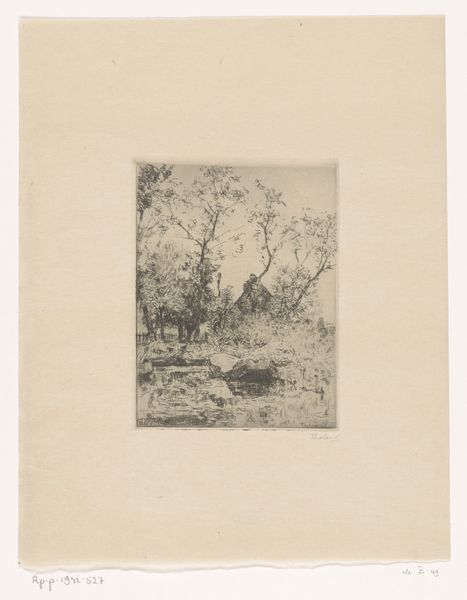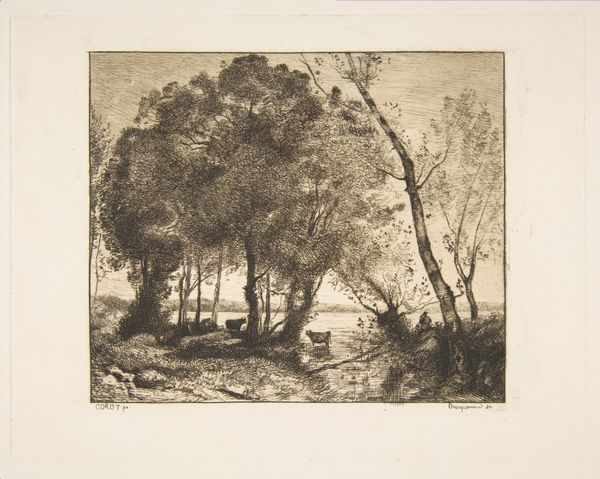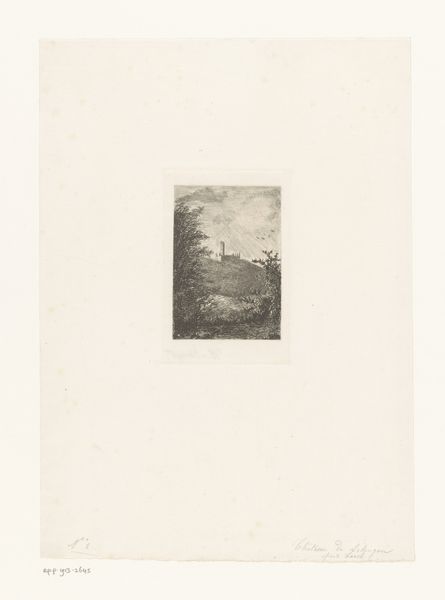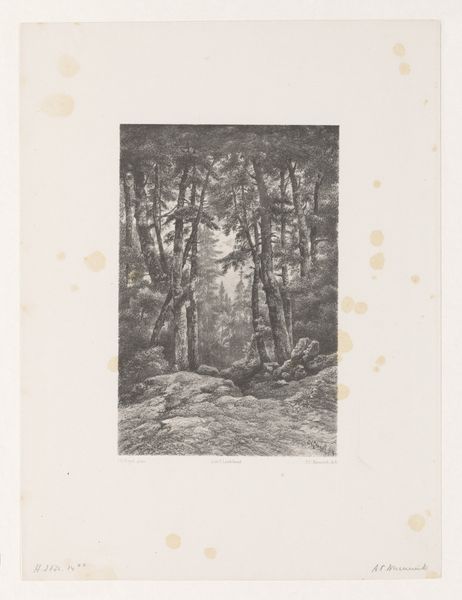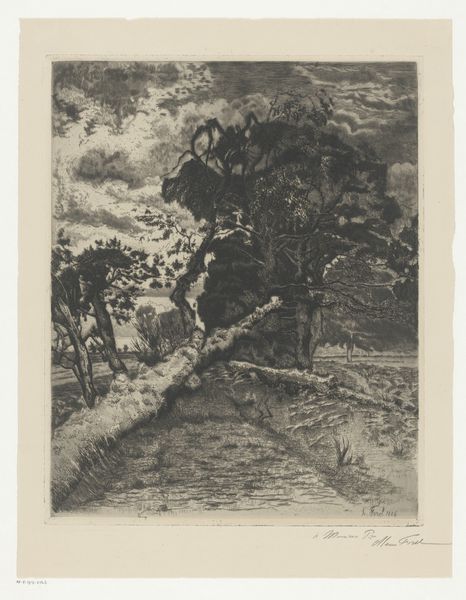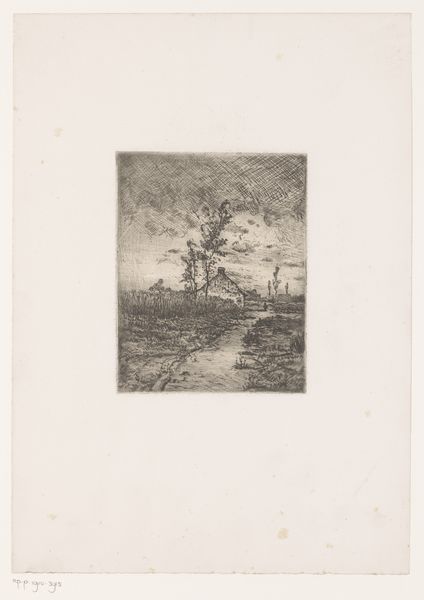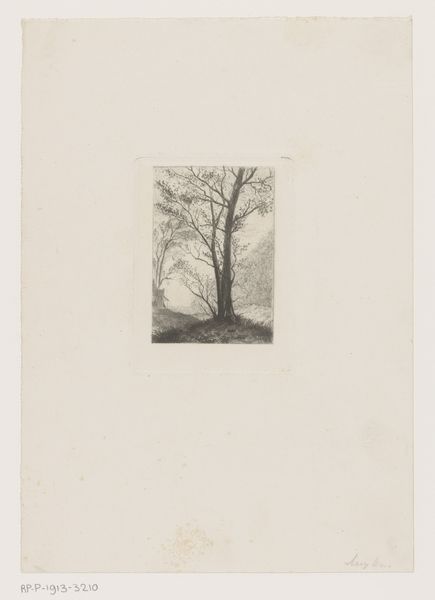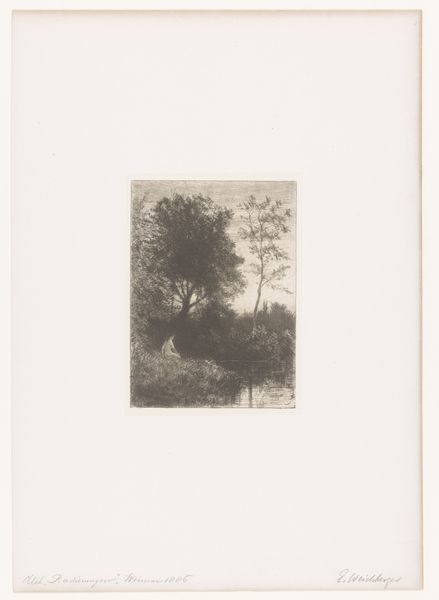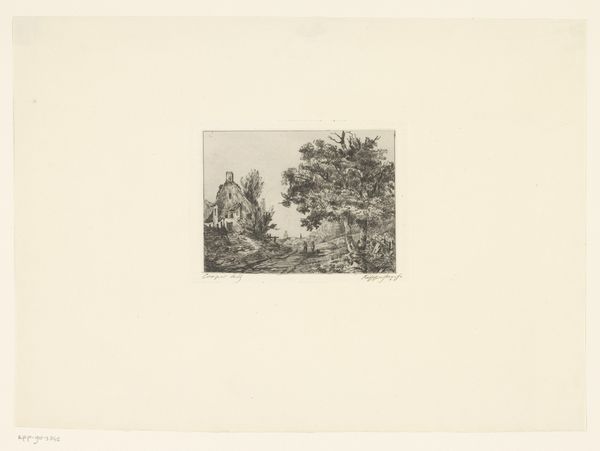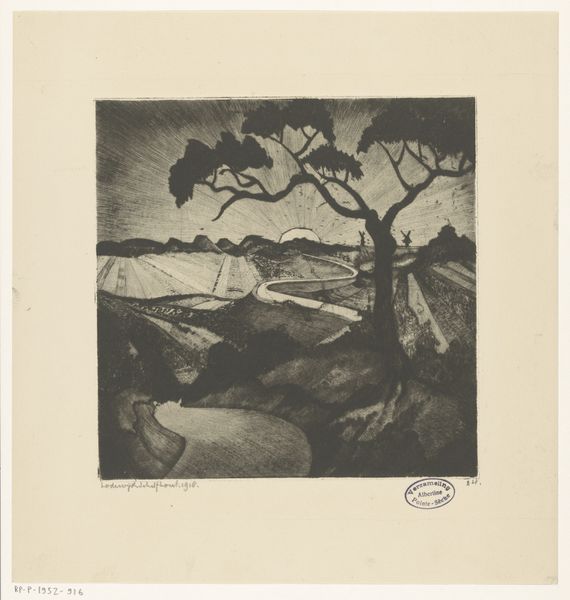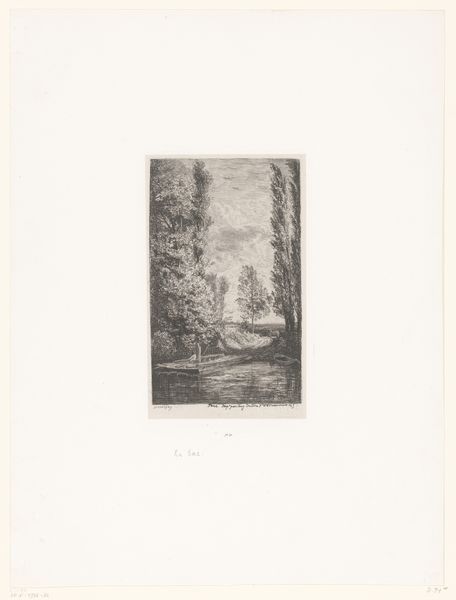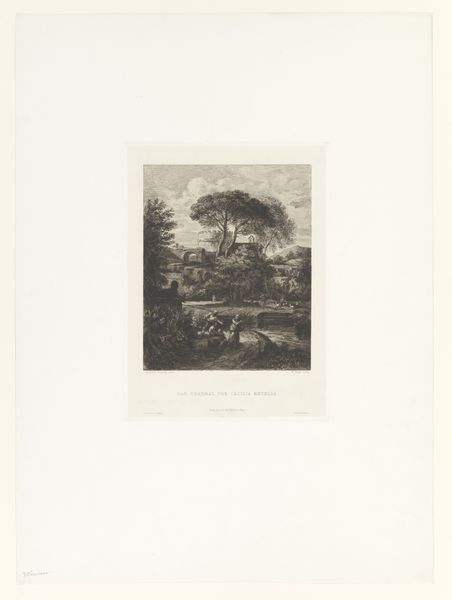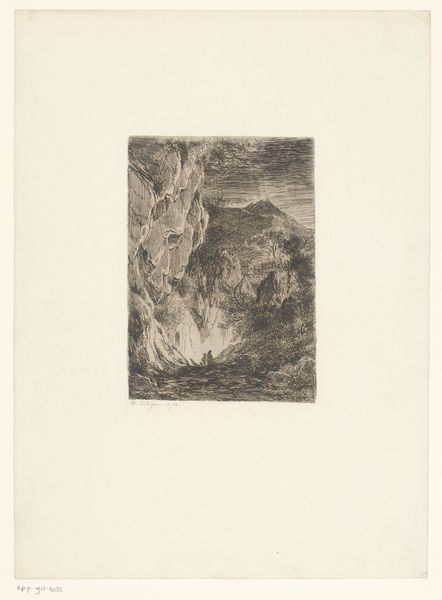
drawing, print, paper, engraving
#
drawing
# print
#
landscape
#
paper
#
line
#
engraving
Dimensions: 278 mm (height) x 216 mm (width) (plademaal)
Editor: We’re looking at "Efterår. Vindblæste træer," or "Autumn. Wind-Blown Trees," by Thorvald Niss, likely created between 1842 and 1905. It's a landscape print, an engraving on paper. I'm struck by how desolate and exposed the scene feels. What do you see in this piece? Curator: Well, placing it in the context of late 19th-century Denmark, one might consider the burgeoning national romantic movement. Artists were turning to the local landscape for inspiration, attempting to define a uniquely Danish identity. The wind-swept trees, rendered with such stark lines, could be interpreted as symbols of resilience, a metaphor for the Danish spirit weathering political or social storms. How does this landscape fit into your understanding of the public role of art? Editor: That’s fascinating. I hadn’t thought about it in terms of national identity. I was more focused on the isolation of the scene. Does the starkness also relate to specific artistic institutions of the time or political motivations for this depiction? Curator: Absolutely. Consider the Copenhagen art scene – the Royal Danish Academy, for example. Niss, as a trained artist, would have been deeply embedded in these institutions. Were there prevailing aesthetic tastes dictating what was considered "Danish" or worthy of artistic representation? It's worth investigating if this seemingly objective landscape is actually performing a specific kind of cultural work. What kind of patronage may have been prevalent at the time? Editor: That makes me wonder if the lack of people is a deliberate choice. Showing nature as something untamed, something fundamentally Danish before modernization… Curator: Precisely! Think about who was consuming this art. Was it an emerging middle class seeking to define their own values? A landed gentry trying to solidify a particular vision of the nation? The politics of imagery are always at play. It may function to construct an idealized view of the nation, masking social realities of the period. Editor: That gives me a lot to think about. I hadn’t considered the social forces shaping what seems like such a simple image. Thanks! Curator: It highlights how even seemingly straightforward landscape prints can be powerful carriers of cultural and political meaning, shaped by their historical context and institutional frameworks.
Comments
No comments
Be the first to comment and join the conversation on the ultimate creative platform.
